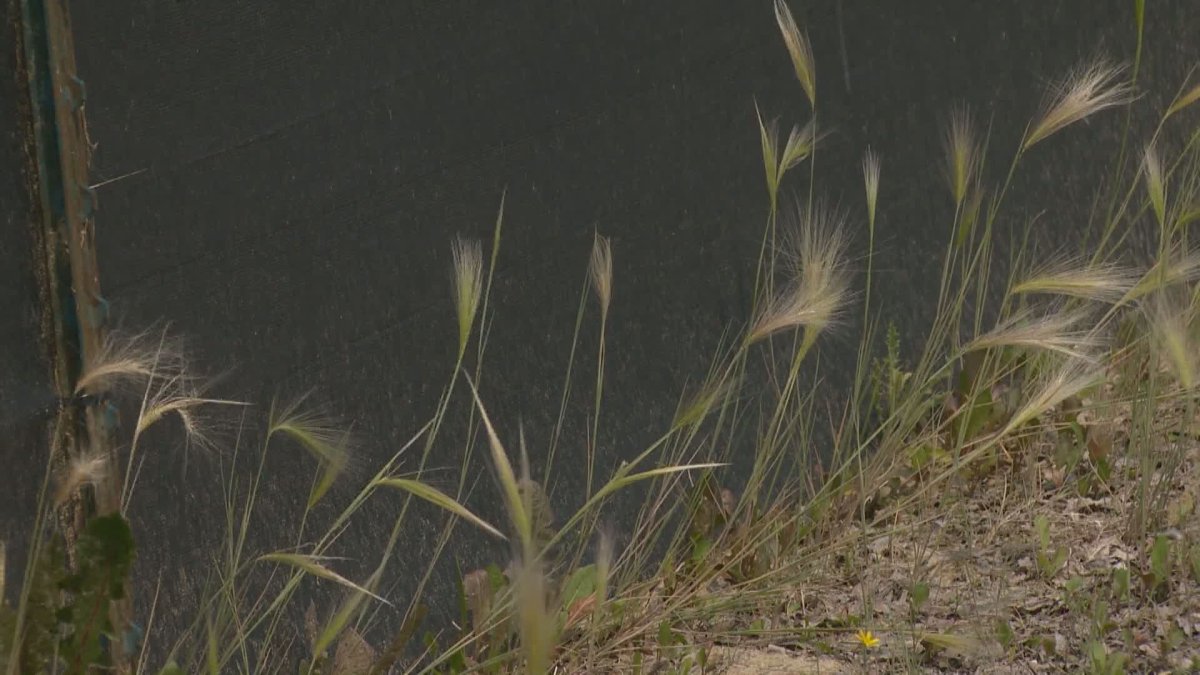The City of Saskatoon says it’s introduced a new guide to help people prevent and control foxtail barley.

In recent years, the native perennial grass has proliferated within city limits with varying concentrations found in parks as well as partially developed and un-serviced land holdings, according to a press release on Wednesday.
“Foxtail matures in summer, typically in July. At maturity, the seed heads of foxtail break up and are sharp. The barbed seed heads can become lodged in the skin, mouth, nose and eyes of dogs and other domestic animals causing severe harm,” reads the city’s guide.
“If digested, the barbed seed heads can embed in soft tissues and lead to infection and even death.”
Pet owner Jesse Vanhouwe has lived in Brighton for over two years and described it as a pet-friendly neighbourhood.
“The threat to pet health is foxtails can get into a pet like if the pet steps on them. They can work themselves into the pets, under the pet’s skin, into the muscle, resulting in visits and surgeries at the vet,” Vanhouwe said.
“Then there’s a little bit worse outcome also is what happens when the animal eats it or ingested it and, unfortunately, those ones can be pretty expensive trips to the vet, surgery and sometimes they can be fatal.
- Toronto Pearson gold heist: Ontario man arrested at airport after arriving from India
- Capital gains changes could have ‘irreversible’ effects, business groups warn
- Renters so far more ‘vulnerable’ than homeowners amid higher interest rates. Why?
- After tornado outbreaks in the U.S., could Canada see similar storms?
“I haven’t personally heard of dogs dying. I heard today of a friend of ours whose dog is actually on its way to the vet today for ingesting some foxtail seed, getting sick and now they’re heading to the vet to hopefully pause or reverse any further damage.”
The city said it’s actively managing current problem areas while taking a proactive approach to minimize the future occurrence of foxtail.
“The big issue that I have with that is that the word proactive is lost on them. They resort to residents filing complaints,” Vanhouwe said.
“I take issue with that policy because it appears to be a real wait-and-see policy.”
Instead of the city’s policy, Vanhouwe would like to see early identification of problem areas and a scheduled maintenance plan.
“The scheduled maintenance plan would consist of identifying foxtail areas of concern early in the season when the weeds are starting to grow and then enacting the management plan to, whether they spray those weeds to get rid of it at that point as soon as they know that there’s an area of concern,” he said.
“Remediation techniques, whether it’s spraying or tilling should be used and … mowing should never be necessary because the weeds would have been dealt with at an earlier stage.
“Mowing would be used as an absolute last resort just because it encourages or it facilitates further spread.
Foxtail is designated as a nuisance weed under the Province of Saskatchewan’s Weed Control Act.



Comments